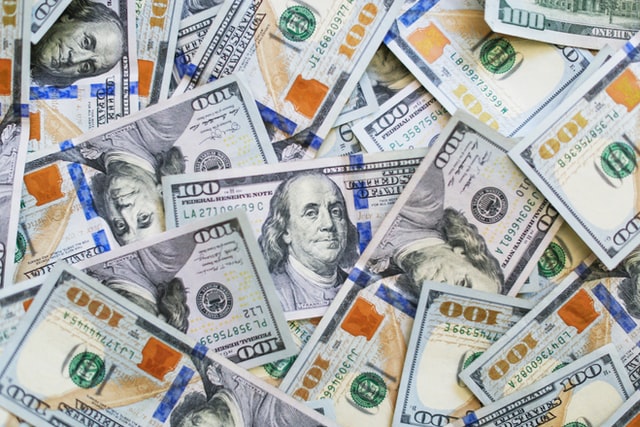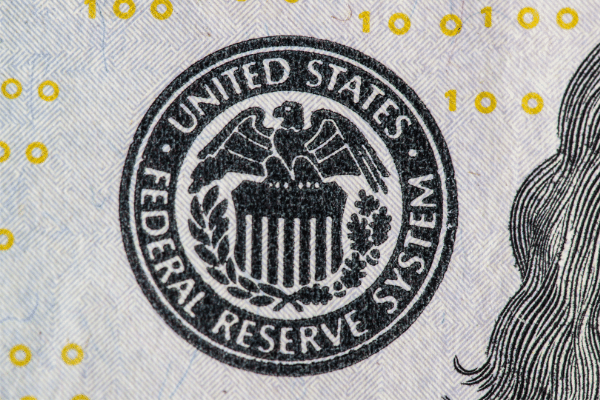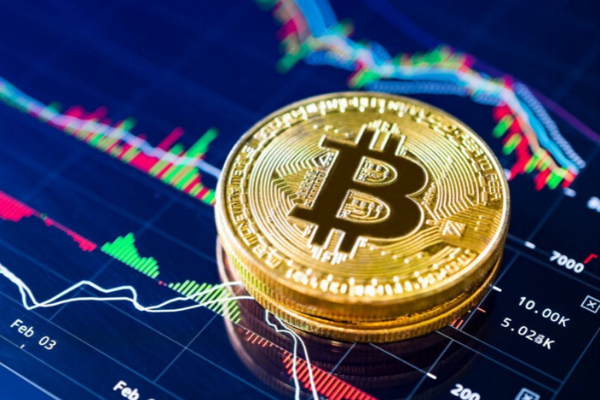
Despite what analysts are warning, inflation isn’t likely to hit us right away, and even though gold and Bitcoin saw a short term boost, their real value as inflation hedges won’t be tested now, but in the future.
One of the first lessons that James Gonzales learned the first time he ever set foot on the bridge of a merchant’s vessel was that a ship, “is not a car.”
Now that may seem obvious to the casual observer, but to anyone who’s ever sat at the controls of a large ocean-going vessel, it’s an important thing to remember.
Because unlike a car, a ship can’t turn on a dime, it needs to be nudged in a different direction, the way you’d ease an old man into a warm bath — and even that takes time.
And so Gonzales took those lessons that he learned in his early days as a seaman to heart, so that when one day he became the Master of his own vessel, he knew exactly how to keep the ship, its occupants and the cargo safe.
As a Master of what is referred to in the industry as a “Capesize” Gonzales had the distinction of being one of a handful of Filipinos that had risen through the ranks to the very top echelons of his profession.
For the uninitiated, a “Capesize” is a merchant vessel that is so large it can’t sail through the Suze Canal and needs to cross from the Atlantic to the Pacific Oceans via the Cape of Good Hope at the southernmost tip of the African continent — hence “Capesize.”
So on a humid summer’s evening, sailing off the port of Mar del Plata on Argentina’s Atlantic coast, Gonzales and his crew were in a particularly celebratory mood.
Marking the last leg of what had been an arduous 6-month voyage, they were finally heading to their home port of Rotterdam and for some much deserved shore leave.
Celebrating a crew member’s birthday, some crew members complained to Gonzales about the poor internet signal and how the birthday boy wasn’t able to get a good video signal to call back home.
Always happy to oblige a well-performing crew, Gonzales went up to the bridge of the Capesize, where his First Officer was on watch and commanded a 15-degree turn towards the Argentine coast to get a better internet signal from a land-based station.
“But Captain,” the First Officer protested, “that takes us close to the sand banks, we have to maintain distance.”
“15 to port, you have your orders.”
The First Officer looked at the helmsman helplessly, as he repeated the order.
And for the next half hour or so, everything was fine.
Until a loud buzzer summoned Gonzales back to the bridge, where a frantic First Officer by now was in full panic mode,
“Captain, we’re coming dangerously close to the sand bank at 45° south, we need to turn hard to starboard (right).”
Slack-jawed and with a look of disbelief on his face, Gonzales watched helplessly as the helmsman tried to steer hard to starboard and away from the sandbank.
But it was too late and Gonzales knew that better than anyone else on the bridge.
Gonzales and the rest of his bridge crew watched helplessly as the 200,000- ton Capesize coasted onto a sandbank lodging itself deep into the soft sands and then coming to a jerking, abrupt halt.
Because a Capesize is not a car — it can’t start or stop on a dime.
Well neither can inflation.
You Can’t Turn Inflation On or Off with A Switch
Which is why even the U.S. Federal Reserve’s comments regarding inflation, at a recent conclave of central bankers at Jackson Hole, Wyoming (virtual of course) was more a matter of form than of substance.
Despite warnings of runaway inflation after the 2008 financial crisis and against a backdrop of (at the time) unprecedented fiscal and monetary policy measures to shore up the financial system, inflation hardly figured in the two decades and a bit since.
But this time really could be different.
One of the world’s greatest deflationary allies in the aftermath of the financial crisis was China — supplying low-priced products to an increasingly indebted world.
But China’s role as a bastion of deflation may well be coming to an end — no thanks to rising trade tensions between Washington and Beijing, but also because workers have been demanding higher wages and better working conditions.
And while global demand may be tepid at the moment (except for sex dolls which saw a surge in demand during lockdowns), supply is also weak.
Many smaller businesses and some larger ones, have either thrown in the towel or are close to, and many more will permanently shutter as well, as the months roll on, coronavirus vaccine or none.
And this will effectively reduce supply, at least in the short to medium term.
Because an abandoned factory can’t be restarted in a Thanos-powered snap.
At the same time, costs for businesses are rising as well, owing to a confluence of factors, including logistics costs and supply chain disruptions caused by the pandemic.
The pandemic has also provided the perfect pretext for protectionism and settling old trade disputes, while additional health and safety measures because of the coronavirus, are loading up costs.
Lower demand and sales has meant that per unit costs have also risen, and may continue to persist, owing to longer term consumer behavior changes — even as overheads are rising.
And while businesses may be forced to absorb some of these increased costs, especially for discretionary goods and services, the prices of necessities and staples is likely to rise.
The bulk of those increased costs for consumer staples is likely to be borne by the consumer.
So why hasn’t inflation hit yet?
Well part of the reason of course is that there’s still plenty of slack in the economy, including high unemployment.
And just like a Capesize, once you point the economy in the direction of inflation, it still takes awhile to get there — it’ll get there and when it does, you might not be able to change direction when you want it to stop.
It’s hard to say what the exact inflection point that will cause inflation will be — but there are plenty of possibilities.
Although unlikely, a vaccine may be developed for the coronavirus (historically we’ve not had a good run when it comes to these sorts of things, but you never know), and that would enable the travel and hospitality sectors to resume operations.
Manufacturers may become more self-reliant and inward-looking, with supply chains closer to final markets, increasing prices because of higher labor and material costs.
Trade protectionism could see commodity prices spike and sentiment could drive prices higher if a return in demand turns out to be faster than expected.
The truth is, we just don’t know — the same way you wouldn’t think a Capesize could run aground while looking for a better internet signal.
But inflation doesn’t need to hit our wallets before it starts hitting our portfolios — inflationary expectations can do that of its own accord.
Because once inflation starts turning higher, it would surely give central banks pause on further rate cuts.
And inflation would mean there would be fewer reasons to buy bonds, in particular low or negative-yielding bonds.
Central banks led by the Fed, are set to keep policy rates very low for an extended period, to help economies through the coronavirus pandemic.

Benjamin Franklin was unimpressed by efforts to clone his likeness indefinitely. (Photo by Giorgio Trovato on Unsplash)
And the Fed has made plain that it is prepared to tolerate inflation rates above the target 2%, while shunning yield curve control — that is pledging to buy longer-dated U.S. treasuries to keep the federal government’s borrowing costs at a certain target rate.
Yet the Fed’s hands may ultimately be tied — Washington has huge fiscal deficits that need to be financed and the yield curve may soon start to steepen again (where longer dated debt attracts a higher coupon rate), meaning there’s more than a chance the Fed will have to intervene.
Inflating Assets Now, Prices Later
Central banks across the world have printed a lot of money to counter the economic malaise wrought by the pandemic — the bulk of which has gone into, and is reflected in, asset price appreciation.
Stocks have erased all of their losses for 2020 and have set all-time records amidst economic conditions the IMF has described as the worst since the Great Depression.
And as inflationary expectations gain traction, demand and prices for real estate, commodities such as oil and gold, as well as Bitcoin, will be supported by dollar weakness.
Yet consumer prices in the U.S. rose just 1% for the 12 months ended July.
And prices in bond markets, where it’s possible for traders to effectively bet on what they think inflation will be, see fixed income investors looking for only a 1.7% rate over the next decade.
But that may be more a function of our current circumstances than necessarily reflecting investors’ long term expectations over inflation.
Right now it’s hard to imagine inflation because so many people remain unemployed and global demand is tepid.
But that assumption forgets a key factor that causes inflation — more money being printed to chase after the same amount of goods and services.
Inflation doesn’t just happen because prices go up as a function of demand and supply — relentless money printing can have the exact same effect even when an economy is in tatters.
Take Venezuela and Zimbabwe for instance — both of which saw both runaway inflation and an economy with hardly any demand.
And therein lies the false sense of security that inflation won’t rear its ugly head — the assumption that because demand is low now, a slack economy with high unemployment shouldn’t see inflation.
Tell that to the millions of unemployed Venezuelans who have seen hyperinflation wipe the value of their money.
Is it any surprise then that Venezuelans were so quick to embrace Bitcoin?
And even if hyperinflation doesn’t occur in the rich world, if inflation were to overshoot 1.7% by a percentage point or so, a rate of 3% inflation per year would erode a portfolio’s value by half in under 25 years.
Whether or not gold and Bitcoin are effective hedges against inflation however is less clear.
Driven by the same thinking as gold investors, Bitcoin buyers are drawn to the cryptocurrency because of its programmatically deflationary design.
While Bitcoin is up about 60% for the year, it is still some 40% off its all-time high reached in 2017.
And both Bitcoin and gold (which has limited industrial use) derive much of their value simply from investors believing it’s worth something.
If that sounds familiar, that’s because that’s the very definition of fiat currency — it’s only value derives from how much people believe in it and what real goods and services they’re willing to give in exchange for it.
Green cotton paper has no inherent value, yet people are willing to kill for dollars — for now at least.
That’s because people believe that the dollar is worth something and they value it — but when inflation starts to run away from the Fed’s control, it’s anyone’s guess what a dollar will buy.
Because just like a Master steering a Capesize, inflation can’t be stopped on a dime and by the time you want to change course on inflation, your economy may already have run aground.






